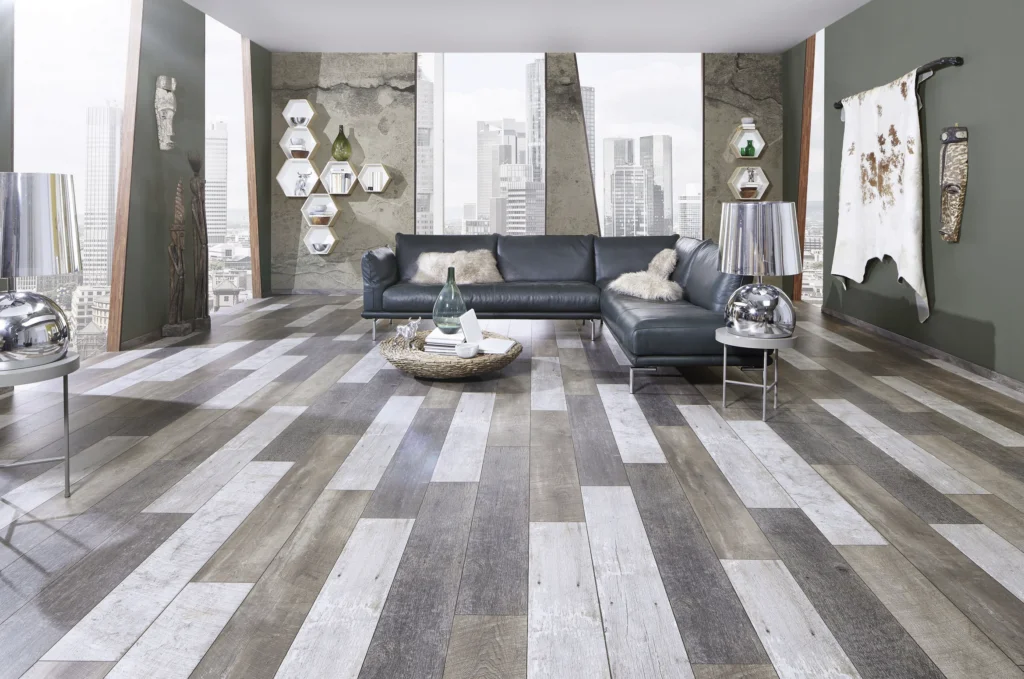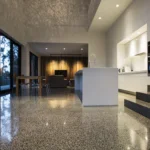If a room feels off, one of the first places to check is the floor. Outdated flooring can make an entire space look stale, no matter how modern or fresh the rest of your decor may be. Flooring plays a huge role in setting the tone for a room, which is why designers stress choosing timeless materials, colors, and finishes. The challenge lies in identifying which flooring styles have fallen out of favor and which are still relevant.
In this article, we’ll explore six flooring options that designers say are no longer in style and offer alternatives that will keep your space looking fresh and modern.
Flooring is more than just a functional element of your home—it’s a key component of interior design. The type, color, and finish of your floors can completely alter the vibe of a room, and if you’re still holding on to outdated trends, your space may feel unbalanced. Designers emphasize the importance of choosing timeless flooring that will age gracefully.
But how do you know if your flooring is making your home look dated? Let’s dive into six flooring trends that are past their prime and discover what you can do instead.
1. Thick, Plush Carpeting

Remember the days when homes were filled with thick, plush carpeting? While it was once the go-to choice for comfort and coziness, designers today argue that it’s officially outdated.
Why It’s Outdated
According to architect and interior designer Priyanshi Jain of Pixels and Spaces, thick carpets not only look bulky but are also difficult to clean and maintain. They’re notorious for trapping allergens and dust, making them less than ideal for homes today, where clean lines and minimal upkeep are prioritized.
Alternatives
Jain suggests opting for low-pile carpets instead, which are easier to maintain and give your home a sleeker, more modern appearance. Alternatively, consider using area rugs on hardwood or laminate floors for added versatility. Area rugs can be easily changed with the seasons or trends, offering flexibility without committing to a full wall-to-wall carpet.
2. Red-Toned Wood Floors

Wood floors never go out of style, but some shades do. One such hue is the bold red-toned wood flooring, which designers now deem outdated.
Why It’s No Longer Trendy
Gaia Guidi Filippi, owner of Gaia G Interiors, explains that red-toned wood floors can overwhelm a room and limit your decor options. Its warm, bold color can make it hard to introduce other shades or change up your design scheme.
Alternative: Natural Wood Tones
If you’re tired of your red-toned wood floors, re-staining them to a more natural shade is a great way to modernize your space. Natural wood floors are timeless and provide a neutral backdrop that allows for more flexibility in decor and design choices.
3. Linoleum Floors

Linoleum was once seen as a budget-friendly flooring option, but it hasn’t aged well over the years.
The Issue with Linoleum
Priyanshi Jain notes that linoleum tends to turn yellow with time, which detracts from its overall appearance. Beyond that, it simply doesn’t have the modern aesthetic that homeowners and designers are looking for today.
Alternatives: Luxury Vinyl Tiles and Planks
For a more durable and stylish alternative, Jain recommends luxury vinyl tiles (LVT) or luxury vinyl planks (LVP). These flooring options mimic the look of hardwood or stone at a fraction of the cost while being much easier to maintain. They offer a modern look that is both affordable and practical.
4. Rustic Flooring

Rustic, farmhouse-style flooring was a huge trend for a while, but designers are now moving away from this look.
Why Overly Rustic Floors Feel Out of Place
According to Gaia Guidi Filippi, overly distressed or rustic flooring feels out of sync with modern interiors. Rough, wire-brushed wood planks can give off a heavy, dated vibe, especially in homes with more contemporary designs.
Alternatives: More Uniform Wood Tones
Filippi recommends choosing wood floors with a more uniform color and texture. A subtle, sleek wood tone will be more adaptable as styles change, allowing you to refresh the rest of your decor without having to overhaul your flooring.
5. High-Gloss Hardwood

While glossy floors may have once been a symbol of luxury, they are no longer a popular choice in modern homes.
The Downsides of Glossy Finishes
High-gloss hardwood floors show every scratch, smudge, and speck of dust. Priyanshi Jain points out that while they can look beautiful when perfectly clean, the upkeep is simply not practical for most people.
Alternatives: Matte and Satin Finishes
For a contemporary, low-maintenance option, try hardwood floors with a matte or satin finish. These finishes not only hide imperfections better but also give your space a more relaxed and understated elegance.
6. Gray-Toned Floors

Gray floors had their moment, but according to designers, that moment has passed.
Why Gray Flooring Is Falling Out of Favor
Gaia Guidi Filippi mentions that gray floors, which were hugely popular in the 2010s, are now seen as cold and impersonal. While they can work in certain spaces, the trend towards warmer, cozier tones has made gray flooring feel outdated.
Alternatives: Warmer Neutral Tones
To make your space feel fresher and more inviting, Filippi recommends opting for flooring in warmer neutral tones like beige, taupe, or light brown. These shades are versatile and provide a warm, welcoming backdrop for your interior design.
Tips for Choosing Modern Flooring
If you’re in the process of choosing new flooring or thinking about updating your current floors, here are some expert tips:
Stick to Timeless Colors
While it may be tempting to choose trendy hues, it’s wiser to go with more classic colors that won’t go out of style in a few years. Neutrals and natural wood tones are always safe bets.
Incorporate Trends in Other Ways
Rather than experimenting with flooring, which is harder to replace, try out new trends through decor, paint, or rugs. These elements are much easier (and cheaper) to swap out as trends change.
Consider Functionality
Think about the function of each room when choosing flooring materials. For high-moisture areas like bathrooms or kitchens, ceramic or porcelain tiles are excellent options. For living areas, wood or luxury vinyl provide both style and durability.
Conclusion
Your flooring sets the foundation for your entire home, and staying up to date with modern styles can help keep your space looking fresh and cohesive. While trends come and go, choosing timeless materials, neutral tones, and practical finishes will ensure your floors stand the test of time. By steering clear of these outdated flooring trends and considering the alternatives suggested by designers, you can create a space that feels current, inviting, and stylish for years to come.
FAQs
1. Can I re-stain my existing wood floors instead of replacing them?
Yes, re-staining is a cost-effective way to update wood floors. Opt for a more neutral or natural wood tone for a timeless look.
2. Are high-gloss floors completely out of style?
While high-gloss floors are less popular due to their maintenance challenges, they can still work in certain spaces. However, matte and satin finishes are much more practical and modern.
3. Is luxury vinyl flooring a good alternative to hardwood?
Yes, luxury vinyl planks or tiles can mimic the look of hardwood or stone while being more affordable and easier to maintain.
4. What’s the best flooring for high-moisture areas?
Ceramic and porcelain tiles are ideal for bathrooms and kitchens due to their water resistance.
5. How often should I replace or update my flooring?
It depends on the material and wear, but generally, floors can last 10-20 years or more with proper maintenance. If your floors feel dated, it may be time for an update.


